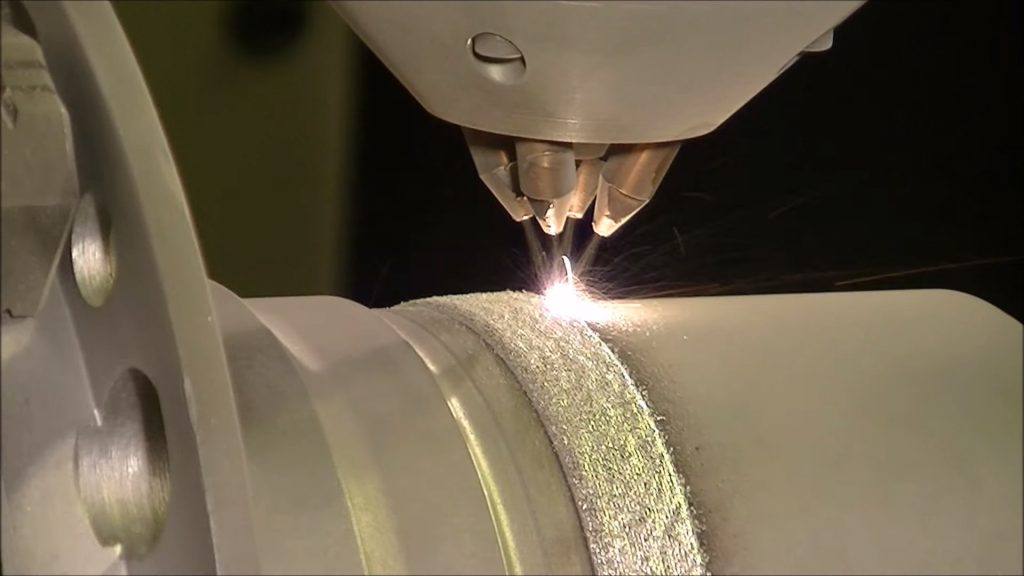An Additive Manufacturing R&D Professional at energy firm Baker Hughes has published a Master’s thesis focused on studying the corrosion and wear properties of 3D printed stainless steel.
Navin Sakthivel, during his time at Oklahoma State University, looked deep into the effects of certain process parameters on wear and corrosion using an Optomec LENS 3D printer. Specifically, the DED-based system was used to fabricate a number of SS 316L test samples under different processing conditions of laser power, laser scan speed, and even powder deposition rate. The crux of the project involved comparing the samples to wrought 316L counterparts via wear and corrosion analysis.
Sakthivel told 3D Printing Industry, “This knowledge will benefit standards organizations such ASTM, ISO, NACE, and NIST in developing their qualification standards and testing metrics for corrosion and wear for additive manufacturing. Literature on the corrosion and wear mechanism of AM metals is very limited today (less than a total of 15 works), compared to thousands of literature works in other aspects of AM.”

The importance of corrosion and wear analysis
316L is second in importance amongst the austenitic stainless steels, right after 304. Characterized by its excellent toughness and corrosion resistance properties, the material sees extensive use in the oil & gas and processing sectors for chemical-contacting parts. Understanding the corrosion and wear of 316L is extremely important for these industries as it accounts for a significant loss of profit due to parts constantly requiring replacement.
Due to factors such as laser melting and rapid solidification, the 3D printed form of 316L has a vastly different microstructural evolution to the conventionally manufactured form. Microstructure is predominantly what governs the corrosion initiation and wear mechanism of a material, so the applications of 316L can vary greatly depending on the production process.
Sakthivel believes that more research is needed in the field before companies can really begin to leverage 3D printing and its benefits for industrial 316L parts.
He adds, “I expect to see an influx in 3D printed 316L’s applications in the renewables, energy storage, and subsea environments when more standards in wear and corrosion are available. Today, the 3D printing material is limited in these spaces due to the lack of standards, which results from a lack of published research in the area.”

316L for metal additive manufacturing
The thesis showed that the grain and grain boundaries in the additively manufactured 316L were smaller than wrought steel, as well as being equiaxed or dendritic in morphology. While this did result in an increased corrosion rate, it also showed that annealing or heat treatments in post-processing could be used to mitigate corrosion.
Sakthivel said “It was proposed that annealing 3D printed 316L is mandatory if companies are to guard it against potentiodynamic polarization corrosion.”
When it came to pitting corrosion, on the other hand, 3D printed 316L was found to have a lower corrosion rate than its wrought counterpart. This was attributed to the improved density of the material resulting from the DED process, with increases in 3D printing laser power correlating to increased corrosion resistance.
Looking at the wear resistance of the material, 3D printed 316L was found to be more wear resistant due to its mechanism of adhesive wear, rather than the predominance of abrasive wear. On as-built surfaces, wear was found to decrease as laser power increased, and the effect of the powder deposition rate was determined to be inconsistent.
Sakthivel concluded, “Future work in this research direction will include investigating the effect of laser surface remelting, laser surface alloying, and laser shock peening on the corrosion characteristics of additively manufactured stainless steel 316L.”
Further details of the study can be found in the thesis titled ‘Analysis of Wear and Corrosion Properties of 316 L Stainless Steel Additively Manufactured Using Laser Engineered Net Shaping (LENS)’.

Researchers from the I-Form Advanced Manufacturing Research Centre in Dublin have previously published a study investigating the effects of metal powder reuse on the porosity of 3D printed parts. With the aim of determining the optimum number of reuse cycles for stainless steel 316L powder, the team employed a whole host of characterization techniques such as X-ray tomography and AFM (atomic force microscopy) roughness measurements.
More recently, SMS group announced a partnership with Outokumpu, a high-grade stainless steel producer, to supply an atomization plant specifically for the production of 3D printing stainless steel powders. The facility is SMS Group’s first to be supplied under a subscription contract.
Subscribe to the 3D Printing Industry newsletter for the latest news in additive manufacturing. You can also stay connected by following us on Twitter and liking us on Facebook.
Looking for a career in additive manufacturing? Visit 3D Printing Jobs for a selection of roles in the industry.
Featured image shows Optomec’s DED-based LENS system in action. Photo via Optomec.


